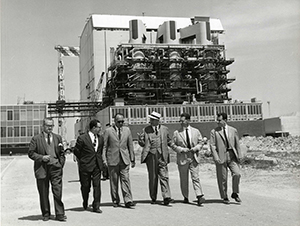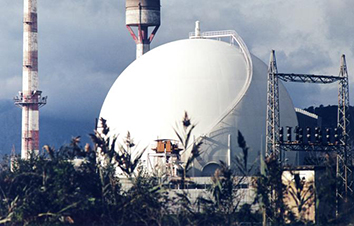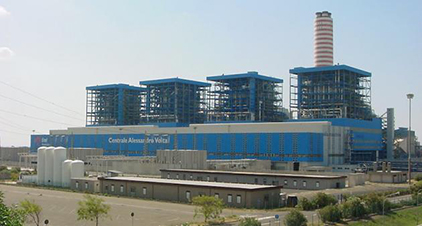When talking about nuclear power in Italy, a short but interesting overview, through which it is possible to understand the reason why nuclear power is not used to produce electricity today in Italy, needs to be made. The development of nuclear energy in Italy took place between the beginning of the ‘60s and the early ‘90s. At that time there were 4 active nuclear power plants which were closed after the referendum held in 1987. Only in the 2000s, the debate about the reopening of nuclear plants started again. Another referendum was held in 2011. The provision that would have facilitated the reopening of nuclear plants was finally revoked.
In 1966, Italy was the third nuclear power producer in the world.
The United States of America and England were occupying the first two places in the ranking.
It goes without saying that this development was due to both the complex consequences of the Second World War that had put a strain on the national economy, as well as they, to the peace agreements signed in ’47.
It is in 1947 that Italy committed to stopping producing energy from fossil fuels.
For this reason, it was necessary to focus on other sources. Therefore, nuclear power stations seemed to be the best alternative.
Italians plants were advanced and aroused the curiosity of even the most powerful states. What is sure is that initially there were no clear ideas about the consequences of nuclear exploitation.
In some cases, Italy represented a real test for British and American prototypes.
The first Italian nuclear power plant was built in Latina, and at the time, it was the most powerful in Europe.
Soon after Latina, two were built in Sessa Aurunca and Trino.


However, the energy that was generated by these plants, wasn’t enough to satisfy the needs of the country.
It is for this reason that a new plant was built in Caorso.
It is important to bear in mind that, at the time, the situation was fairly confused. Italy didn’t have a clear plan on energy. Basically, Italian energy requirements hadn’t been defined yet.
It is only in 1975 that thanks to the National Energy Plan, Italian energy requirements were finally clarified. In the plan, it was clearly stated that the number of nuclear power plants needed to be increased, therefore, the construction of new nuclear power plants was part of this National Energy Plan.
Right in 1982, a new nuclear power plant in Montalto di Castro was built.

The ‘80s were a very controversial moment in history where Italy extensively debated on the use of nuclear power.
The reason of this debate was the terrible accident of 1979. Many failures followed and many citizens started to fear for their own safety.
With the Chernobyl accident in 1986, the situation degenerated and a movement was born in Italy, who managed to promote a referendum on nuclear power.
On that occasion, 80% of Italians decided to shut down all the nuclear power stations on the Italian soil. However, the referendum didn’t explicitly want the closure of the already existing plants, but only to prohibit the opening of new ones.
The compensatory charges to local authorities were revoked.
Basically, building new nuclear plants wouldn’t have been that beneficial.
Following the referendum, the governments that followed put an end to the exploitation of nuclear energy, closing the existing plants. Regarding Montalto di Castro, work started to reorganize the building.
Of course, there was a little concern regarding the possible lack of energy that was once produced by nuclear power stations.
To satisfy the country demand, governments decided to stake everything on coal and gas.
But that wasn’t all, as oil was also exploited. Following an increase in energy costs, in the 2000s a new debate about nuclear power arose.
Gas and oil had significantly increased electricity bills, and, for this reason, many thought to restore nuclear power stations hoping to meet the Italian energy needs in an alternative way.
Moreover, nuclear power plants would have been beneficial for the environment as they didn’t pollute, while making Italy self-sufficient from foreign countries, as Italy imported and still import energy to satisfy the domestic needs.
In 2011, Italian citizens were called once again to express their views on nuclear power.
Again, the referendum came in the aftermath of the March 2011 accident in Fukushima.
54% of Italian citizens voted. Therefore, the nuclear program initiated by the government was put on hold.
Let’s try to understand the reason nuclear power is not well accepted in Italy.
A big area of our peninsula is subject to earthquakes. Therefore, many of the coastal areas could be submerged by water very soon.
Another important matter is also related to the current management of solid waste. In the event that nuclear waste were going to be recycled in the same way of solid waste, the consequences could be truly terrible for all citizens. As Italy doesn’t have enough uranium resources, it would be forced, in any case, to depend on foreign countries. Another equally important aspect related to nuclear power plants is the fact that Italy can exploit renewable energies.
The same amount of energy produced by nuclear power could be generated by exploiting these renewable sources, such as the sun, the wind and the water, which are also non-polluting but definitely less dangerous.
During these recent years, many have been the campaigns in favor of renewable energies and many were the results. Among these, the fact that nuclear energy has been replaced.
The debate on nuclear energy can be definitively considered closed, despite the fact that, for the moment, Italian energy requirements remain unknown.
To conclude, in Italy, we do not use nuclear power plants to produce energy, both because of the incompatibility of the territory as well as, the presence of many alternatives able to replace nuclear power.
